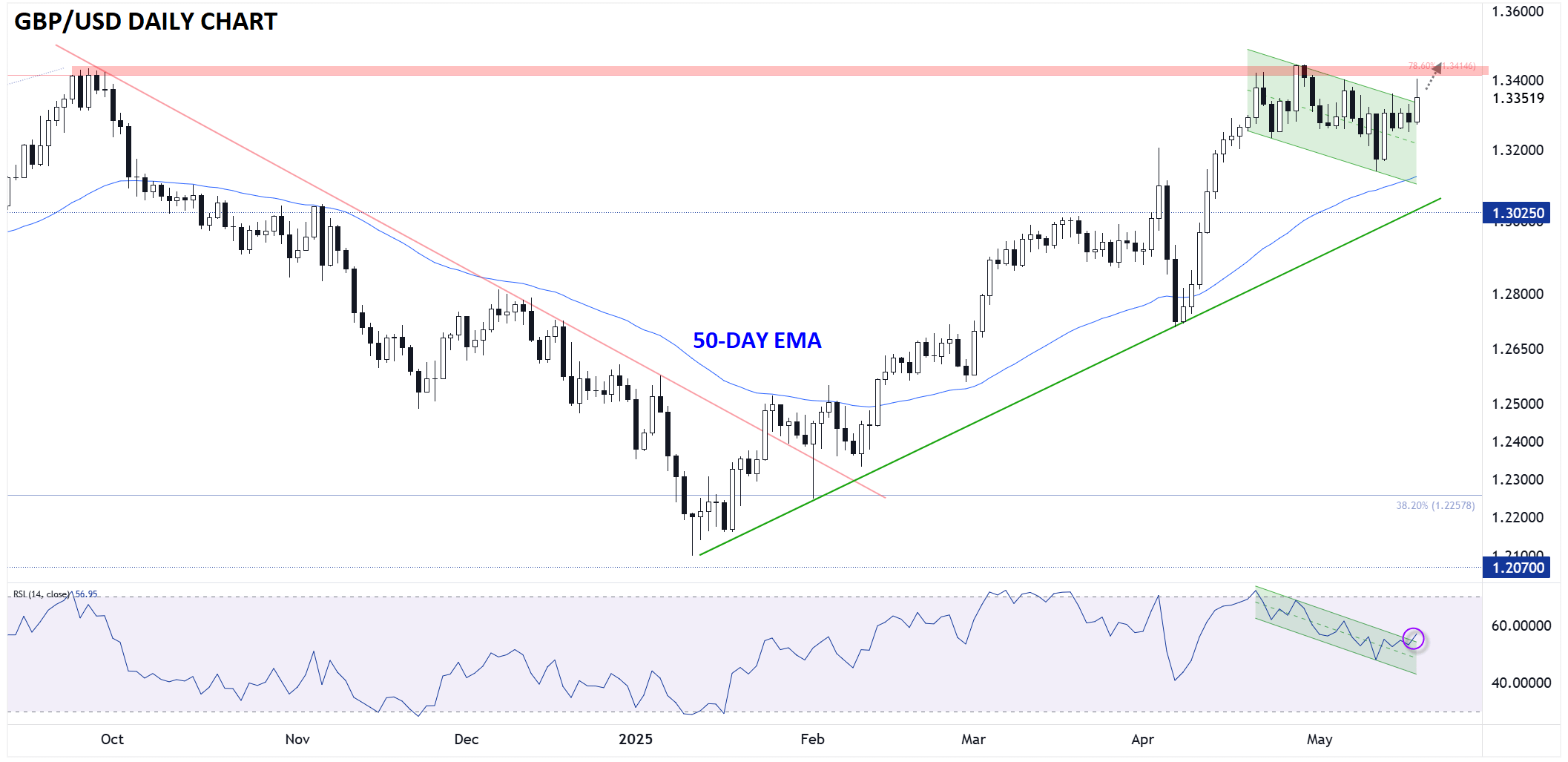Nvidia pushes back on AI bubble narrative as Blackwell drives Q3 beat, shares jump
- Britain and the European Union struck “Brexit Reset” pact in an attempt to remove trade bottlenecks and inject fresh momentum into both economies.
- Traders appear to approve the deal, with both the euro and the pound near the top of the FX relative strength tables and Germany’s DAX rallying to record highs to start the week.
- GBP/USD is on the verge of breaking out from the well-defined bullish flag pattern.
Yesterday, Britain and the European Union struck “Brexit Reset” pact in an attempt to remove trade bottlenecks and inject fresh momentum into both economies. UK Prime Minister Keir Starmer and European Commission President Ursula von der Leyen signed the deal at London’s Lancaster House, framing it as a pragmatic move to boost growth and stabilize markets amid global uncertainty.
Below, we summarize the most relevant aspects of the agreement for traders:
Trade Flows and Export Recovery
By scrapping many routine border checks on animal and plant products, the agreement aims to reverse the roughly 21% drop in UK exports to the EU since 2020. Reduced red tape for British food and drink may cut costs, shorten delivery times, and free up capital that had been tied up in compliance. London projects up to £9 billion in annual gains from faster customs clearance and aligned standards in food, emissions trading, and energy.
Fisheries and Market Sentiment
The politically charged extension of EU fishing access until mid-2038 smooths a potential flashpoint in UK–EU relations. While fishing contributes just 0.4% of GDP, settling the dispute removes a hurdle that might have unsettled markets already jittery about strained post-Brexit ties.
Security Fund as Defense Investment
In a bid to deepen financial cooperation, UK firms will now compete for loans from the EU’s new €150 billion “Security Action (WA:ACT) for Europe” defense fund. This access to cheap, long-term financing is designed to shore up defense procurement pipelines, support jobs in the aerospace and armaments sectors, and send a strong signal to investors about renewed transatlantic solidarity...at a time that the US, a traditional military powerhouse, appears to be pulling back from its military involvement in the continent.
Capital Markets and Financial Services
Although the deal stops short of rejoining the single market or customs union, it establishes “dynamic alignment” in several regulatory areas. Crucially, financial services firms can expect greater predictability when issuing permits or clearing transactions, potentially easing London’s post-Brexit bid to retain its role as Europe’s premier finance hub.
Mobility, Consumer Confidence and Travel
Reinstating access to EU e-gates for UK passport holders and launching a time-limited “youth experience” work scheme should bolster consumer spending on travel and education. Those measures, while modest, may further lift business confidence and household outlays in border regions.
In summary, the reset deal aims to shore up near-term GDP growth, stabilize investor sentiment, and lay the groundwork for deeper economic integration between the UK and EU without reopening the broader political debates of Brexit. Traders appear to be giving their approval to the deal, with both the euro and the pound near the top of the FX relative strength tables and Germany’s DAX rallying to record highs to start the week.
British Pound Technical Analysis: GBP/USD Daily Chart
Source: TradingView, StoneX
Focusing on cable, GBP/USD is on the verge of breaking out from the well-defined bullish flag pattern we highlighted on Friday. The exchange rate remains above both its upward-trending 50-day EMA and rising trendline, signaling a healthy medium-term bullish trend as long as the pair remains above 1.3100 or so. If the breakout is maintained (or ideally extended) through yesterday’s close, it would set the stage for a rally to 3+ year highs into at least the mid-1.3400s.
While not infallible, the ongoing breakout in the 14-day RSI indicator serves as a clear leading/confirmatory signal of the bullish breakout in GBP/USD itself.
